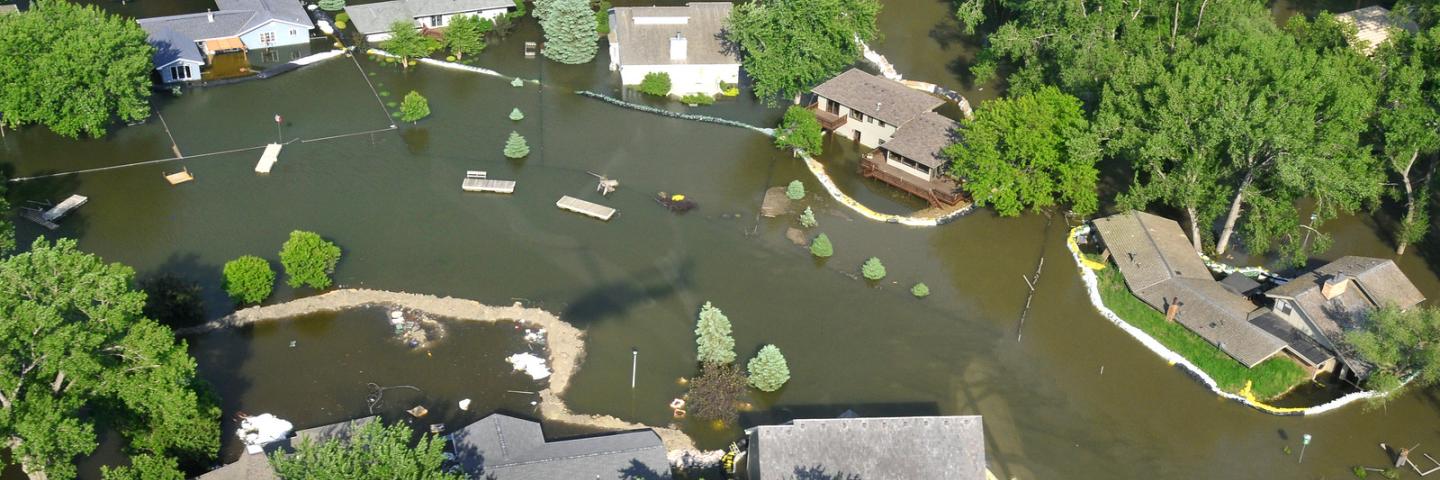Emergency Watershed Protection Program Successes

In June of 2008, a major storm system moved across Illinois, triggering extensive flooding in several counties. The damages left behind were a perfect fit for the NRCS Emergency Watershed Protection (EWP) projects.
Program Overview
The Emergency Watershed Protection Program was established by Congress to respond to emergencies created by natural disasters. It is designed to relieve imminent hazards to life and property caused by floods, fires, windstorms and other natural occurrences. All projects must be sponsored by a political subdivision of the State, such as the city, county, or conservation district. NRCS may pay up to 75 percent of the construction cost of emergency measures. The remaining 25 percent must come from local sources and can be in the form of cash or in-kind services.
This fact sheet briefly describes several EWP projects in Illinois following a 2008 storm event. For more information on these and other projects, contact Tom Book, Agricultural Engineer, 2110 W. Park Court, Suite C, Champaign, Illinois 61821, 217.352.3536 ext. 108
The Story
In June of 2008, a major storm system moved across Illinois, triggering extensive flooding in several counties. The damages left behind were a perfect fit for the NRCS Emergency Watershed Protection (EWP) projects.
In the southeast portion of the state, a series of logjams, eroded road ditches and drainage systems, and damages due to a levee break, covered a five county area. NRCS spent $344,000 in EWP funding for repairs and debris removal.
North Fork Logjam
The North Fork Conservancy District requested assistance to remove obstructions in a 42 mile stretch of the North Fork River that they manage. The sponsors have worked hard over the years to keep the channel free of obstructions. The river provides drainage for countless acres in Jasper, Clark and Crawford Counties in SE Illinois. Over 100 logjams were removed at a cost of $216,000. The project involved considerable coordination efforts with the sponsors, county officials and many landowners in the counties. Local residents were pleased with the project after several flood events have since occurred and the river continues to flows freely.
Consolidated Drainage District
The Consolidated Drainage District in Lawrence County had extensive damage to their drainage system due to levee breaks and flooding. The District partnered with NRCS to complete the project to remove sediment from the drainage channels and protect adjacent banks that were eroded during the event. The cost of the project was approximately $47,000.
Russell Township
Russell Township utilized the EWP program to repair a severe scour erosion problem adjacent to a road in Northern Lawrence County. The Township has very limited funds and without NRCS’s assistance, the road might have closed in the near future. The project cost approximately $30,000 and was completed through an agreement with the township sponsors.
Ambraw River
The Ambraw River Drainage District sponsored this EWP project. During the flooding of the Embarras River in the spring of 2008, the river scoured out a natural levee. The scoured area, if not repaired, could potentially create a new river channel cutting off thousands of acres of farm ground and numerous roads. It took approximately $51,000 to restore the area and protect the property. To date, the river has come up to bank full elevations several times without incident. The sponsors are pleased with the end result.
For more information, visit the Emergency Watershed Protection page.

